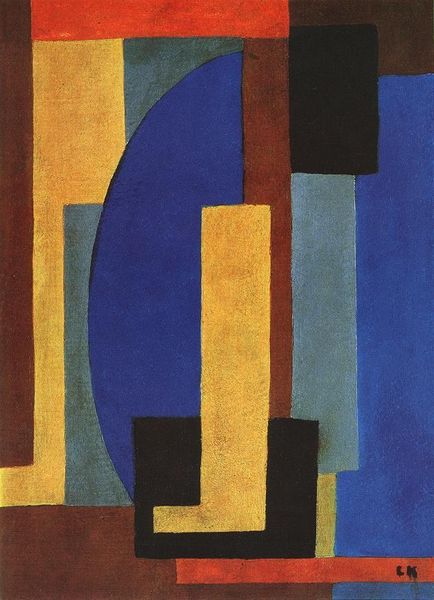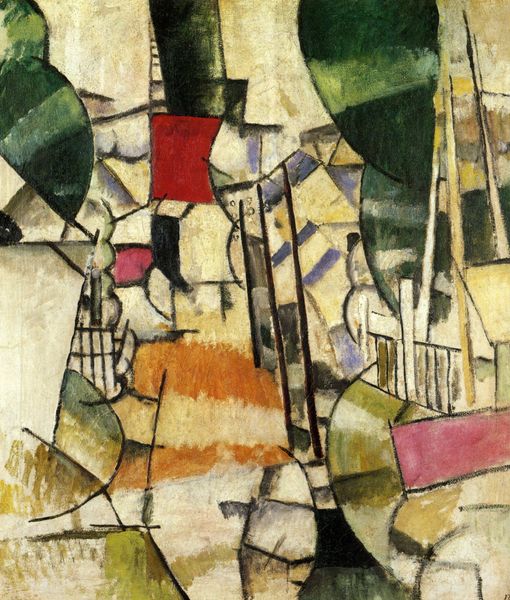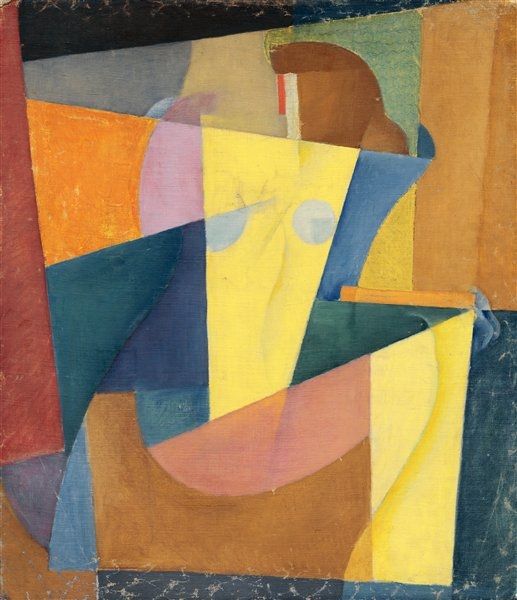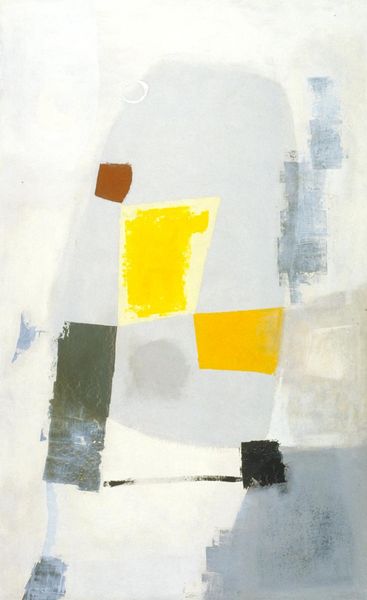
#
abstract expressionism
#
abstract painting
#
painted
#
possibly oil pastel
#
oil painting
#
fluid art
#
neo expressionist
#
acrylic on canvas
#
paint stroke
#
expressionist
Copyright: Public domain
Curator: What a striking composition. We’re looking at “A Cello” by Louis Marcoussis, painted in 1921. It's thought to be an oil painting. Editor: The colors are certainly subdued, but there is an intriguing dynamism, isn’t there? Like peering through a broken lens. All those fractured shapes give me a real sense of unease. Curator: Marcoussis, working within the Cubist idiom, deconstructs the instrument, presenting not a literal cello, but an analytical one. How the visual symbol challenges conventional artistic representation and broader societal norms. What do you see there? Editor: Beyond the literal instrument, the abstracted shapes seem to speak to broader themes of fragmentation after the Great War. See how those splintered planes are vaguely reminiscent of classical sculpture? Almost like shattered ideals and an urgent quest for new values. There's certainly melancholy, but is there optimism lurking too? Curator: Very astute. Cubism itself was, in part, a reaction to the changing social landscape, fueled by technological advancement and philosophical shifts. And I’d suggest the cello as subject matter might reflect nostalgia for a pre-industrial age. Editor: Oh, I can see that! It evokes the soul and emotional depth associated with classical music amid growing technological advancements. Also, in color symbolism, gold often depicts grandeur, perhaps longing. That bright block on its right recalls classical sculpture, lost memories, all wrapped up. I now see it embodies complex, multifaceted notions. Curator: Marcoussis's painting allows us insight into the shifting artistic, political and social concerns after WWI, encouraging conversation about a period in need of symbolic resolution. Editor: So, it presents us with an unraveling, and an invitation, for a way to stitch together something that reflects cultural longing? It certainly gave me something to reflect on!
Comments
No comments
Be the first to comment and join the conversation on the ultimate creative platform.













